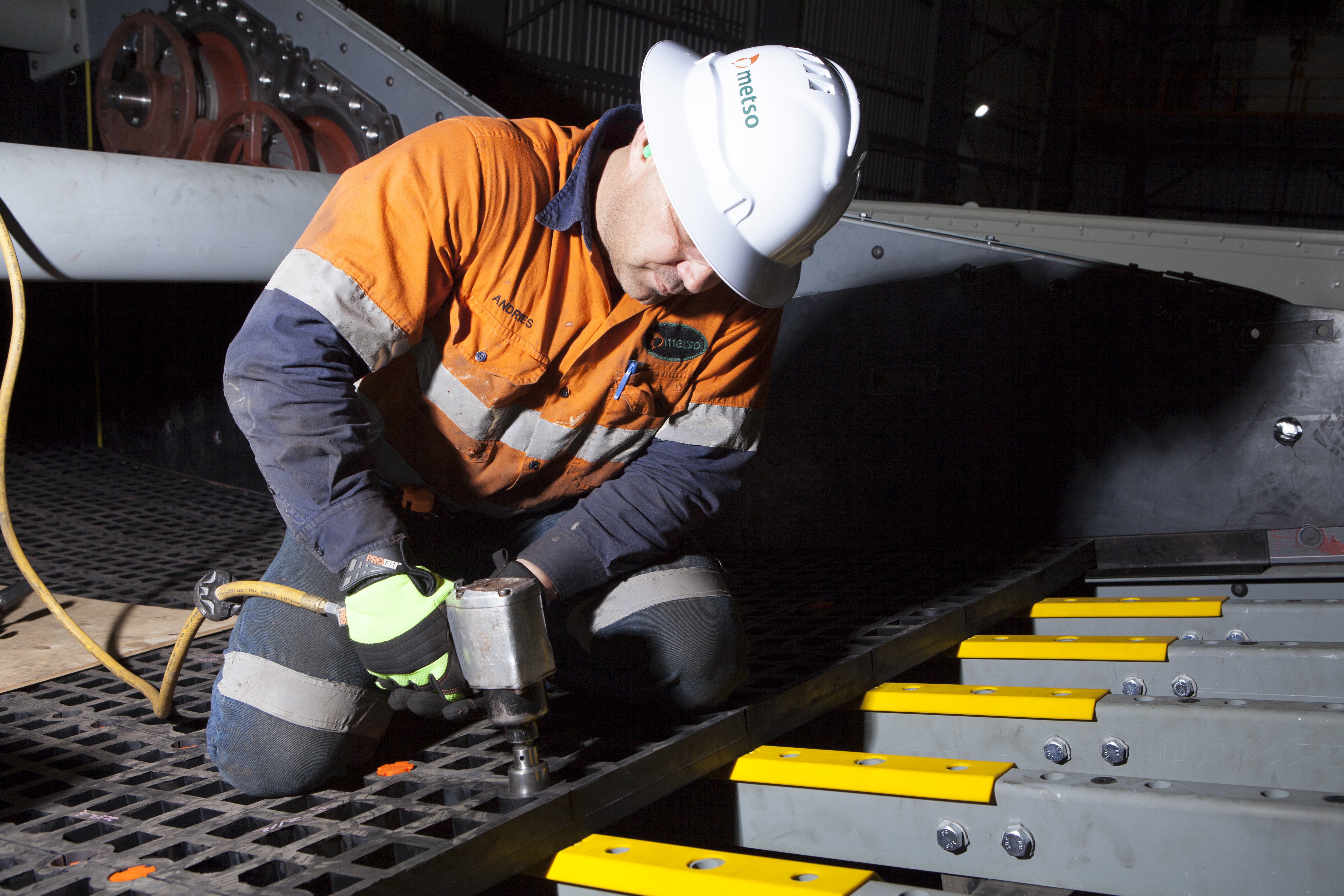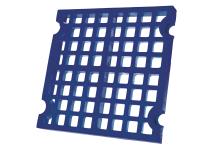
A global aggregates equipment giant’s new approach to its screening media business promises much for customers. Guy Woodford reports.
The past year has seen big developments in the screening media side of
“This change has been good because the clients on the two sides want different things. Mining customers want more optimised crushing chambers, for example. Now we have business managers developing screen media specifically for construction aggregates customers, and business managers developing screen media for mining clients.”
Metso’s full range of construction aggregates and mining screening media consists of modular (Trellex 305PS, LS standard and Trellex LS HiPer); panel (Trellex MP and Trellex PCO); tension (Trellex TFX); and wire (Trellex PCC (PolyClean) – particularly for U.S. construction aggregates customers - solutions.
In 2017, Metso launched ScreenPlanner, the company’s new, complementary software that allows customers to monitor screening performance and screen media wear, while also making it easier to plan maintenance and keep track on their cost per tonne.
Meanwhile, Metso’s new hammerless attachment system for its Trellex screening media features specially developed pins that can be screwed into place as well as removed using an impact driver. Accidents occuring when pins that are stuck get torn off by force can be avoided. In addition to improved safety for construction aggregates and mining customers, the new attachment system cuts the change-out time considerably, resulting in higher uptime and productivity.
The new attachment system is currently available as a standard option for Trellex 305PS screening media in the most common build heights (40mm - 60mm).
Larsson says Metso also continues to benefit from extensive work on improving the compatibility of Metso’s modular screening media with the company’s comprehensive screening model range, including its Premier screens.
Metso recently expanded its global manufacturing capacity for rubber screening media used in minerals processing by investing in three new injection presses. One at Metso’s facility in Sweden has been in use since late 2017, while the other two – at Metso’s Australia and India sites – have been delivered and will become operational soon. The €1.7 million investment has significantly increased Metso’s global rubber screening media manufacturing capacity. The demand for Metso’s screening media has grown in the mining and construction aggregates sectors after the introduction of 1’x1’ modular screening media, Trellex 305PS, in 2016.
Larsson says: “This investment was initially to cater for rising demand from mining customers, but it also supports our delivery capability for the aggregates industry. For example, in Australia there is a construction boom. Metso has sold a number of new fixed crushing plants, mainly to east coast customers. These customers have generated a huge growth in demand for our modular Trellex LS screen panels.”
Haver & Boecker, a leading equipment manufacturer and solutions provider in aggregates and mining applications, is offering its Tyler brand of hooked engineered screen media as a solution to the problem of expensive deck conversions. Tensioned screen media can be used on a cambered deck, eliminating the need for a deck conversion when switching from woven wire to polyurethane screen media. The media includes products such as Ty-Max and Ty-Wire.
Hooked screen media allows operations to easily switch from woven wire to modular polyurethane products without the expense of a deck conversion. Retrofitting a machine from a cambered deck to a flat deck can cost as much as US$15,000 (€12,075) per deck. Tyler’s tensioned screen media is used on a cambered deck to eliminate the need for that conversion. This also allows operators to test the media on a vibrating screen with no additional cost or commitment.
Another benefit is that Ty-Max and Ty-Wire can be blended with woven wire or self-cleaning screens on cambered decks. In many applications, operators are looking for more wear life on the feed end of the screen. This can be accomplished by installing a section
of Ty-Max at the feed end. Ty-Wire can be used in the middle of the deck, for example, where basic screening takes place to give operators the ideal combination of wear life and open area. Using woven wire or self-cleaning screens at the discharge end will provide maximum open area at the end of the deck.
The polyurethane screen media is manufactured out of Tyrethane, Haver & Boecker’s signature blend of polyurethane. It’s made in the only facility in North America that blends its own material, which is critical for quality control. Chemists developed Tyrethane to offer the best combination of open area and wear life for both wet and dry applications.
Tyrethane is poured open-cast, resulting in 1.5 to 2 times longer wear life than injection-moulded products sold at comparable prices. In addition, open cast polyurethane permanently hardens when cured to maintain its chemical properties, so it resists wear and tear. Injection-moulded screens can soften when the temperature rises during screening, resulting in shorter wear life.
Haver & Boecker manufactures a variety of Tyrethane screen media options to suit different operations’ applications, taking into consideration top sizes and opening requirements. Operators looking for high durability and strength choose Ty-Max, which Haver & Boecker reinforces with an internal wire grid as thick as 9.5mm. Ty-Wire combines woven wire with an engineered composite to achieve open area closer to wire cloth but with four to six times longer wear life. Ty-Wire weighs less than woven wire, making it safer to handle and easier to install.
Haver & Boecker also offers Ty-Deck modular panels, available in multiple configurations for flat deck setups. Ty-Deck’s lightweight design eases installation and sectional deck replacements.







